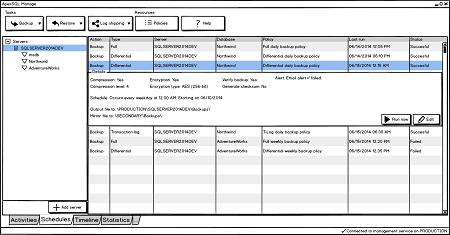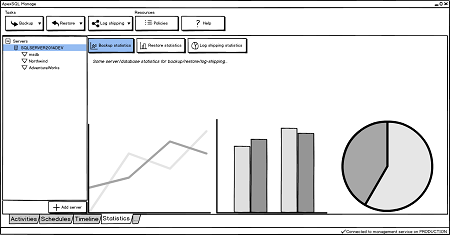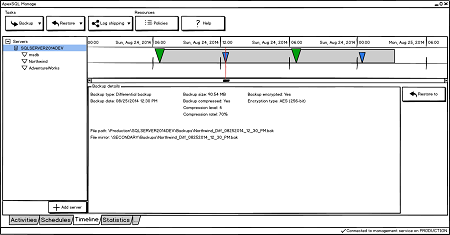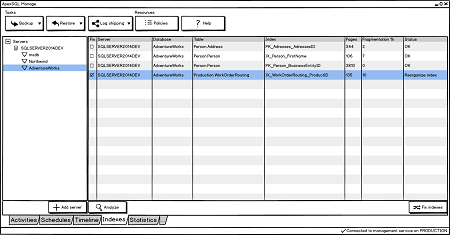All existing schedules can be found in the Schedules tab which also displays individual schedule details. From here, the user can edit schedules, identify those that have failed as well as manually re-run individual scheduled jobs which were not successful or just need fresh run:
All backup metrics such are backup frequency, processing time, success/fail rates and much more are presented in user-friendly and easy to read graphs. Depending on the metric type, and the information that it presents, the metric is presented in a line, column, or pie chart:
Central repository
All captured metric values are automatically stored in a central database repository – a single SQL Server database. The central repository provides easier data maintenance and stores history of activities for all backups under the ApexSQL Backup wing.
Timeline overview
Enables user to inspect backup timeline and allows user to restore database to a specific point in time:
In addition to backup jobs, ApexSQL Backup can perform Index manipulations. By analyzing fragmentations, and identifying problematic areas, the application can rebuild problematic indexes to reduce fragmentation and hence increase system performance.
Supported SQL Server versions
Full support for SQL Server 2014, 2012, 2008 R2, 2008, and 2005
September 5, 2014













